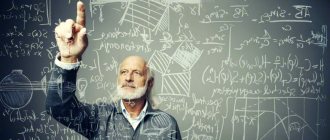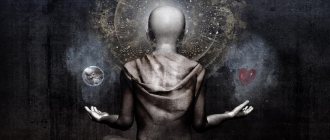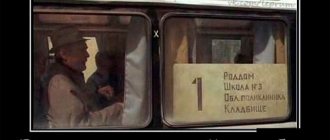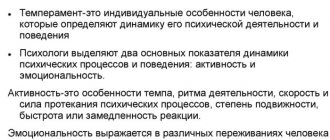Taoism is one of the most ancient religions on Earth. Its origins are rooted in archaic shamanic practices. According to legend, the foundations of Taoism were laid by the Yellow Emperor, Huang Shi.
The Chinese scientist Lao Tzu managed to systematize and describe the dogmas and rituals of this teaching in his book “Treatise on the Path and Its Manifestations in the Universe.”
Analyzing the scientific heritage of Confucius, one can notice the connection between the philosopher’s life path and his ideas. But it is impossible to draw similar parallels between the work and life of Lao Tzu, because his biography is completely unknown to historians. An ancient legend says that he was born from the sun and moon rays that touched his mother. At the same time, he was born already an elderly man, since his mother carried him in her womb for several decades. Therefore, his name is translated as “Old Child.” According to legend, as soon as he was born, the philosopher began to preach the teachings of Tao.
Taoism and other teachings
Taoism and Confucianism
Taoism, with its concept of non-action, has traditionally been in opposition to Confucianism, which preached service to the sovereign and society.
This opposition was so deep that it was reflected even in the activities of the Jesuit missionaries: for example, Matteo Ricci was in close contact with the Confucian elite and rejected Taoism as a pagan practice - while his opponent, Michele Ruggieri, argued for the similarities between the concepts of Tao and logos . For the integration of elements of Taoism into Confucianism, see Neo-Confucianism.
Taoism and Buddhism
The first Taoist school to emerge from the study of Buddhist treatises was the Lingbao school. Its founder Ge Chaofu adopted from Buddhism the idea of rebirth in the five worlds and, in a greatly simplified form, elements of cosmology. At the same time, the Taoists did not abandon the practice of achieving immortality, but improved the concept of immortality, abandoning the literal interpretation of an endless stay in the same earthly body, and introducing other worlds for celestials - happy lands, islands of immortals, etc. From the Buddhist theory of rebirth followed the doctrine of karma and retribution. Later, Buddhist elements became familiar to Taoist schools, which also adopted Buddhist methods of meditation.
How to achieve enlightenment?
Taoists argued that to achieve enlightenment it is necessary to lead an ascetic lifestyle. This is the only way to become a spirit over time. To do this, followers of this philosophy and religion are obliged to go to the mountains and abandon all their close people and relatives. Also stop worrying and thinking about everyday things, about everything that used to be of value and just contemplate what surrounds them. Something similar to downshifting.
It is clear that not every modern person is capable of such an act. Therefore, there are small concessions. To know reality, you need to dissolve in it. For example, when you are cleaning your apartment, going somewhere, or even eating, try not to think about anything in the process.
And if thoughts arise, take the position of an observer, allowing all ideas to arise and disappear without your participation. Only by being in the present, in inaction, can you feel the saturation of your being.
Comparative analysis
Confucianism and Taoism have common cultural roots; both faiths adopted the traditions of primitive religion with its cult of nature:
- Ancestor cult belongs to Confucianism. But the principles of the cult (filial piety, for example) are characteristic of the entire Chinese society;
- Taoism is characterized by polytheism, Confucianism is dominated by the cult of the emperor and Heaven;
- Confucianism is the path to perfection through self-restraint, suppression of base passions, and remaking oneself. The teaching encourages constant social activity. The main emphasis is on moral and moral principles;
- Confucianism refers to man as a social being, in whom reason should prevail over feelings, Taoism - as a creature of nature, with all its advantages and disadvantages, emotions and passions;
- Taoism accepts a person as he is;
- The main virtue of Taoism is non-action, since attempts to change anything in nature or society violate the natural order of things.
Become a sage
In short, Taoism is about returning to harmony with the flow of life. True, we are already Tao. We are the expression of his universal perfection.
When all obstacles to appreciating our own essential nature are removed, we begin to see ourselves as we are. Whole, free and one with all things.
Happiness is not something we should strive for. After all, happiness is the essence of our own nature when it is not hampered by limiting thoughts and erroneous beliefs about ourselves and the nature of reality.
Balance, harmony, inner peace are not things we need to add to ourselves. They are already in us. They are part of the factory default settings.
It requires little effort on our part. Our only effort is to discover and remove any obstacles to appreciate the perfection of our own nature, including its apparent shortcomings.
Taoism suggests that instead of constantly trying to fill ourselves with thoughts, experiences, beliefs and sensory pleasures, we allow ourselves to let go and relax into a state of quiet receptivity.
There is nothing selfish or selfish about a sage. Such a person is freed from the tyranny of both reason and social conditioning. He is free and completely consistent with his nature. Like a newborn child - pure and innocent.
A wise man should not fear what others fear or what others want. He doesn't crave because he knows that he already has everything.
“I drift like a wave in the ocean,” says Lao Tzu. “I blow aimlessly like the wind.”
He later states, “Only by living the Tao can you truly be yourself.”
This implies that there is more to us than we can understand. The part of our nature that transcends the limited body and mind and the illusory self-esteem that causes us so much suffering.
In conclusion, I would like to generalize Taoism as the “path of harmony.”
Using the universal flow - the creative intelligence that runs this whole show; making the sun and stars shine, causing flowers to bloom and keeping us all alive - we begin to appreciate the joy and wonder of simply being alive.
There is a natural order to life and when we return to this with balance, life becomes simpler, more peaceful and harmonious.
The main message of Taoism? Let go, let it happen, be simpler, be kinder and enjoy life.
Philosophy of Taoism
The concept of “Tao” can be deciphered as an eternal path leading into the unknown and having no end, passing everywhere and nowhere at once. Tao is an eternal movement, symbolizing the movement of nature, the continuous processes of creation and destruction.
Tao is the unshakable Absolute, to which everything that exists, including every person, submits. Tao is the emptiness that creates all things. Lao Tzu compared it to a room, writing that the most important thing in a room is not the walls, but the empty space within those walls.
Taoism absorbed some elements of neighboring religions, Brahmanism and Buddhism, for example, the idea of the Absolute. The concept of “Tao” passed into Confucianism, where it is interpreted as adherence to moral laws and principles of humanism, constant intellectual, spiritual and moral self-improvement.
Because of this and several other differences, Confucianism and Taoism are in conflict with each other.
The path of Tao is woven from several components:
- special nutrition of the body, exclusion of physical food from the diet;
- physical training, complete submission of the body to the mind;
- inaction (non-interference) - a complete refusal of purposeful activity, attempts to change one’s life through an effort of will, surrendering oneself and one’s destiny to the will of Nature.
From the principle of non-action, Lao Tzu derived the principle by which the management of society and the state should be built. According to him, the ideal ruler is the one who strives to interfere as little as possible in the life of society, who, if possible, refuses reforms, allowing people to live in obedience to the will of heaven and solve their problems on their own.
Lao Tzu formulated the three virtues of Taoism:
- qi (vital energy);
- shen (intelligent spirit);
- jian (saving energy).
In Taoism, both man and the universe exist forever. Physical death means the merging of the soul with Tao. All that is available to a person is observation and contemplation. Any attempt to disrupt the natural order of life is fruitless.
There is a constant struggle for the soul of man between demons and divine spirits. The outcome of this struggle depends on the person himself, his behavior: by doing good deeds, he feeds good spirits and brings himself closer to comprehending the Tao. By committing evil deeds, he feeds demons, and his spirit weakens.
In Taoism, the concepts of feminine and masculine principles - Yin and Yang - occupy an important place. The famous circle of black and white principles, inextricably linked with each other, was invented by Taoist monks in the 4th century BC
e. Just as life cannot be only light or only dark, so Yin and Yang can only exist in symbiosis.
Activity and strength are attributed to the masculine principle, balance and calmness are attributed to the feminine principle. In Taoism, only a person in whom both principles are in balance is able to lead a correct life and achieve the Tao.
Another feature of Taoism is the absence of solemn and pompous rituals inherent in many other religions. In addition, there are no Taoist temples or houses of worship because only initiates can participate in Taoist rituals.
The only religious buildings of the Taoists are monasteries, the number of which is rapidly growing in modern China. Monks are increasingly putting on performances for the public, demonstrating their mastery of martial arts.
It is noteworthy that in Taoism there are no concepts of Hell and Heaven. Taoists do not strive to go to Heaven after death, but to find eternal and harmonious life in this world. There is no God himself - he is replaced by the abstract and polysemantic “Tao”.
Social and philosophical schools of Ancient China - Confucianism and Legalism
1. Confucianism
- the oldest philosophical school that considers man primarily as a participant in social life.
The founder of Confucianism is Confuci
y (Kun-Fu-Tzu), who lived in 551 - 479. BC e., the main source of the teaching is the work of Lun Yu (“Conversations and Judgments”).
The main issues addressed by Confucianism:
• How should people be managed?
• How to behave in society?
Representatives of this philosophical school advocate soft management of society. As an example of such management, the power of the father over his sons is given, and as the main condition - the attitude of subordinates to their bosses as sons to their father, and the boss to his subordinates as a father to his sons. The Confucian golden rule of human behavior in society says: do not do to others what you do not wish for yourself.
2. The teachings of Confucius contain a number of fundamental principles:
- live in society and for society;
- give in to each other;
- obey your elders in age and rank;
- obey the emperor;
- restrain yourself, observe moderation in everything, avoid extremes;
- be humane.
3. Confucius pays great attention to the question of what a boss (leader) should be. A leader must have the following qualities:
- obey the emperor and follow Confucian principles;
- to rule on the basis of virtue (“badao”);
- have the necessary knowledge;
- serve the country faithfully, be a patriot;
- have great ambitions, set high goals;
- to be noble;
- do only good to the state and others;
- prefer persuasion and personal example to coercion;
- take care of the personal well-being of subordinates and the country as a whole. In turn, the subordinate must:
- be loyal to the leader;
- show diligence in work;
- Constantly learn and improve yourself.
The teachings of Confucius played a major role in unifying Chinese society. It remains relevant today, 2500 years after the life and work of the author.
4. Another important social teaching of Ancient China was legalism
(school of legalists, or Fajia).
Its founders were Shang
Yan (390 - 338 BC) and Han Fei (288 - 233 BC). During the era of Emperor Qin-Shi-Hua (3rd century BC), legalism became the official ideology.
The main question of legalism (as well as Confucianism): how to govern society?
Legalists advocate governing society through state violence based on laws. Thus, legalism is the philosophy of strong state power.
5. The main postulates of legalism
are the following:
- man has an inherently evil nature;
- the driving force behind human actions is personal selfish interests;
- as a rule, the interests of certain individuals (social groups) are mutually opposed;
- in order to avoid arbitrariness and general hostility, state intervention in social relations is necessary;
- the state (represented by the army and officials) must encourage law-abiding citizens and severely punish the guilty;
- the main incentive for lawful behavior of most people is fear of punishment;
- the main distinction between lawful and unlawful behavior and the application of punishment should be laws;
- the laws should be the same for everyone, and punishment should be applied to both commoners and high officials (regardless of rank) if they violated the laws;
- the state apparatus should be formed from professionals (that is, bureaucratic positions should be given to candidates who have the necessary knowledge and business qualities, and not be inherited);
- the state is the main regulatory mechanism of society and, therefore, has the right to intervene in social relations, the economy, and the personal lives of citizens.
Concepts and ideas
Taoism formed the basis of the state philosophy of China. Taoism determines the life guidelines of most modern Chinese. Its basic ideas have not changed since the time of Confucius, and remain relevant. Basic concepts of Taoism:
- Tao is the path, the impersonal force that controls all phenomena in the Universe;
- De is the strength of spirit, the virtue that Tao gives to the rulers of China;
- Qi is the life energy present in all beings;
- Wu wei is the principle of non-action, according to which the best behavior strategy is not to interfere with the natural course of things;
- Pu is the energy of empty objects.
The main essence of Taoism is the search for the true path. The Taoist strives to become one with the world around him and to gain enlightenment. Tao is infinite and multi-valued, it is the universal law of existence. It cannot be known through the senses; only the enlightened can comprehend the great law that even Heaven follows. To know true happiness, a person must know the Tao and walk his life path consciously. After physical death, the immortal spirit merges with Tao, but man’s task is to achieve this merger during his lifetime. The teachings of Taoism help with this.
Every person follows the path of Tao, but does it unconsciously. To develop spiritually, people must adhere to the principle of non-action. It can be confused with indifference, but in fact it is the only truly conscious activity. Inaction teaches contemplation, knowledge of one’s inner world, and through it, unity with the universe. The ideal of one who follows the path of Tao is immersion in the divine Tao. This can be achieved through many years of meditation practice, special gymnastics and breathing exercises.
What it is
Taoism is a teaching that has become widespread in China. It is considered one of the oldest in the world - its origin dates back to approximately the 5th century BC.
Taoism is called a religious-philosophical view because it has absorbed features of both concepts:
- philosophy with its inherent study of being, knowledge, the Universe, philosophical treatises - Tao Chia;
- religion, which is based on faith in a higher power and presupposes a certain dogmatism, as well as indispensable spiritual practices - Tao Jiao.
However, such a division is hardly noticeable - as a rule, Taoism is viewed as a combination of religious and philosophical aspects.
At the same time, there is no God as such - the concept of “Tao” is the basis. It is multi-valued and implies the beginning, the way to comprehend the world order, the nature of the Universe and its laws. The main goal is to merge with the Tao, to become one.
There is an opinion that Taoist philosophy is in opposition to Confucian philosophy, and it is not without foundation. In both movements, the concept of “Tao” is present, but it is interpreted somewhat differently.
Confucianism sees Tao as adherence to moral principles and the rules of humanism. It presupposes the constant self-improvement of a person as a part of society - learning writing, exact sciences, music, and sportsmanship. In other words, Confucius looked at Tao from the perspective of social life.
In contrast, Taoism considers Tao as the nature of all things, the beginning of being. A person must live according to the laws of nature, be part of it, forgetting about his own “I” and not interfering with the measured flow of life. Simple and natural are the main characteristics of Taoist life.
The cornerstone concept of Tao
The concept of Tao is often vague and indefinable even for someone who professes Taoism. The basic ideas are briefly described by Lao Tzu's formula: “Tao generates one, one generates two, two generates three, and three generates all ten thousand things.”
That is, Tao is the beginning of beginnings, an absolute community that is in eternal motion, like water that fills everything in this world. This is the path, the road, fate, law. Everything in man and in the entire cosmos is a product of Tao; it cannot be outside of it and without it.
There are two Taos. One - the Tao without a name - has a visual image of a dragon or snake devouring its tail. This symbol, popular in many cultures, means an unstoppable and eternal cycle, movement along the spiral of time. It is not possible for a person to understand its meaning and purpose. His destiny is Tao with a name - like a tiny scale in the skin of a dragon - the essence of his ultimate existence on earth. And the main thing for each individual is to merge with Tao, to become part of the eternal universal movement.
Forms of manifestation
- Philosophical. Aristocrats used the Tao as a way of self-expression. They tried to understand the meaning of life, as well as their existence.
- Mystical. Uneducated people sought to get to the monks so that they could answer their questions, help with advice, give a recipe for recovery, and so on.
- Scientific. The monks explored the laws of nature and sought to use them in various sciences. It was thanks to the Taoists that humanity received glass, porcelain, gunpowder, etc.
Story
Taoism is one of the oldest religions.
The principles of Taoism are rooted in the ancient practices of Chinese shamans. The supposed “father” of the religion is the ancient Chinese scientist and thinker Lao Tzu, who was the first to give a detailed description of its philosophy and rituals, and actually put it into the form of a coherent teaching. Unlike Confucius, Lao Tzu may be a fictitious figure: beyond legend, there is no evidence that this philosopher actually existed.
Legends say that Lao Tzu (translated as “old child”) was carried in his mother’s womb for 81 years and was born immediately with gray hair. Taoism originated in the 5th-3rd centuries BC. e. and took shape in the 2nd century BC. e. Its prototypes were the shamanism of the Chu region, the magic of the Qi region and the philosophy of northern China.
Taoism emerged in an era when Chinese society was fragmented, in an atmosphere of constant struggle for power, bloody clashes and political chaos. Initially, the new teaching was popular among the poor, who were attracted by its central idea - the equality of all people, the existence of every person's right to life and freedom.
The central idea of Taoism is the equality of all people
The first Taoists dreamed of the emergence of a just society and an end to strife. In the 2nd century AD e. The teaching spread throughout all the lands of China, and the first Taoist schools appeared. As the number of Taoists grew, the monks began to organize peasant revolts against the authorities.
At the same time, they enlightened illiterate peasants, held conversations about the purpose of human birth, the boundaries of good and evil, and taught them to live in harmony with nature. Later, by the 5th century, the monks began to completely abandon the worldly and create closed, secluded monasteries, where they devoted themselves to the service of the Tao. Some became hermits and settled alone in mountain caves.
There were several forms of Taoism, each of which corresponded to the interests of different sectors of society:
- mystical - was common among the common people. Its function was to educate a person, develop morality and adherence to norms of behavior in society. It is characterized by simplified ideas about the Tao combined with superstition. For solutions to spiritual problems, ordinary people turned to enlightened monks;
- scientific - confessed by monks, many of whom were scientists. The scientific research of Taoist monks was driven by the desire to obtain the elixir of immortality, and in the process of searching they made many important inventions, such as glass, gunpowder and porcelain. The monks significantly enriched Taoism and Chinese culture: they created theories of the origin of the world and man, the teachings of Feng Shui, Wu Shu (philosophy and martial art), Qigong (yoga and breathing exercises);
- ethical and philosophical - was distributed only among the educated elite of society, focused on existential issues of the value of being, the purpose and meaning of life, as well as on the sphere of feelings.
Development of the idea
Taoist schools began to take shape in the 1st and 2nd centuries AD, changing over time, dividing or, conversely, merging with others.
The main ones were:
- School of Heavenly Mentors
First known as the "Five Buckets of Rice", it appeared in the 1st and 2nd centuries and developed during the so-called Six Dynasties era. Later it split into northern and southern schools. In the Tang era, in the 12th century, they were revived again in the form of the School of the True One - Zhenyi, widespread in the south.
- Quanzhen
The so-called “monastic Taoism”. It was formed in post-Mongol times and found recognition in the south of the country.
- Maoshan
Also known as Shangqing. The main practices were visualization and contact with higher powers. At the beginning of the 14th century it fell into decay.
- Lingbao
Closely associated with Buddhist thought, it emphasized meditative practices. It was also absorbed and then completely ceased to exist in the 14th century.
Existing next to Buddhism and Brahmanism, which later became Hinduism, Taoist thought had some common features with them, for example, the idea of the Absolute, as well as the idea of the relativity of life and death.
Hinduism
In the 5th century, the number of Taoists grew, they were joined by hermits who dreamed of the surprisingly long (8-12 centuries) or immortal life that Taoism speaks of. At this time it becomes more of a religion than just a philosophy. The main difference between the Taoist view is the desire for immortality, while representatives of other religions dream of paradise.
By the 5th century there were over two hundred and fifty treatises of Taoism, by the 17th century more than fifty were added, and now there are almost one and a half thousand works.
Taoism has never been a traditional religion. It was built on the principles of equality of people, so peasants, workers, and the lower strata joined it en masse. Taoist popular uprisings were often carried out.
During the Tang and Song empires, knowledge of the basic texts of Taoism was included in the imperial examination program.
In the Middle Ages, monasteries were built throughout the country, where hermit monks lived and comprehended the nature of the Tao. They allowed only initiates to participate in their rituals. Often individual monks lived in isolation, cutting down stone cells.
During the Qing reign, starting in the 17th century, persecution of religion began, Taoist monasteries were destroyed, and sacred books were burned. The rulers referred to the fact that Taoism is a pseudoscience with its excessive contemplation and undermines the foundations of statehood. This situation continued until the mid-20th century, only occasionally followed by periods of relative recognition.
Chinese painting, 17th century
With the advent of the 60s and the Cultural Revolution, the doctrine began to be rehabilitated, monasteries were built again, and philosophical thought began to move west. Modern Taoism is a religious and philosophical movement that contains unique monasteries, mystical rituals that smack of esotericism, and practices for training the mind, body and soul.
In modern times, Taoist teachings have gained much of their fame thanks to qigong breathing exercises, wushu martial techniques, and also the direction of feng shui, which originated here.
symbol also originates from here .
Religious rites and deities
After the canonization of Lao Tzu, the basis of Taoist philosophy was a complex hierarchy of good gods and evil demons. The list of main gods recognized by different schools of Taoism is approximately the same. The main role in the pantheon is occupied by the Three pure deities, who replaced each other and ruled the world for several time cycles. Following them is the Jade Emperor, the ruler of human destinies. Almost equivalent to him is the Lady of the West. She opens the gates of life, releasing souls onto earth and letting them into Heaven after death.
The Seven Star Lords of the Northern Dipper and the Six Star Lords of the Southern Dipper are subordinate to the Jade Emperor. Next come the guardians of the cardinal directions and the guardians of the elements. They have thousands of deities under their command, including those who joined the pantheon after earthly life.
Religious rituals in Doasism are conditional. They are designed to unite people, pay respect to the deities and receive their blessings. The most popular rituals are carried out on the eve of the New Year and after it. Preparations for the holiday begin in January. People do spring cleaning in their homes, hang up red decorations, give each other gifts and visit each other. New Year celebrations last for several days in a row. At this time, mass festivities are held. The main character of the holiday is the Chinese dragon, a symbol of the manifestation of Yang.
Briefly about Taoism
Taoism is the second philosophical and religious movement.
The main postulate of Taoism: the existence of the primary source, Tao, which means “the path, the truth.” Tao is the Absolute, the basis of foundations, the beginning of all beginnings, the eternal path and eternal movement. Since everything in the world is predetermined, one must live in accordance with Tao, without resisting predestination, following the flow of life (Tao). Philosophical Taoist writings appear in the fifth century BC. e.
As a primary source, they mention the name of the legendary Yellow Emperor, Huan Shi. The Chinese sage Lao Tzu is considered a more reliable author of Taoism. He is credited with authoring the main book of Taoism, “Treatise on the Path and Its Manifestations in the Universe.” The book contains the postulates and rituals of the teachings of Tao.
The Legend of Lao Tzu
Almost nothing is known about Lao Tzu's life.
There is a beautiful legend about the great old man. According to this legend, Lao Tzu was born an old man, but grew younger every year. His name translates as “old child.” All his life he served as a book keeper. Seeing injustice and sorrow around him, Lao Tzu decided to leave China in search of a blessed country, but at the border the chief of the guards refused to let the sage through until he described his teachings.
Lao Tzu inscribed five thousand characters, mounted his ox and left for India. There he became Buddha. Images of Lao Tzu in freedom are very popular in China.
Lao Tzu taught that life is an alternation of paired states, sadness and joy, happiness and unhappiness, love and hate. And since everything is changeable, no matter what happens, you just have to wait for the next change.
Principles
To comprehend the Tao, you need to follow certain rules regarding the body and spirit, as well as the rule of doing nothing:
- Divine spirits and evil demons fight in man. With good deeds you can appease the spirits, and they will open the path to knowledge of the Tao;
- the search for the blessed path goes through bodily perfection. Through physical exercise a person must achieve complete subordination of his body to his mind;
- the principle of inaction is the denial of any activity leading to change, because nature and Heaven have already come up with everything, and man, with his intervention, can only ruin everything.
Followers of Tao, in their desire to understand Tao, fenced themselves off from everything that prevented them from thinking and contemplating, built monasteries and dedicated their lives to serving Heaven and Tao. In Taoism, great importance was attached to the search for longevity, and later immortality.
For the Chinese, longevity is a sign that a person follows the “path of Heaven and Tao”, does not complain, taking life with all its joys and sorrows for granted. Symbolically, immortality was seen as inner freedom.
Yin and yang
In the 4th century BC, Taoist monks depicted a circle consisting of two parts, a dark female and a light male.
Just as life could not be only light or only dark, so these two principles could not exist separately. Only the harmony of two principles can lead a person to Tao. The Taoists did not have magnificent religious rites, so there are no Taoist temples, only monasteries. Rituals are performed exclusively by initiates. Taoism preaches turning to nature and contemplation.
Qi energy
All Chinese medicine - acupuncture, breathing exercises, martial arts - came out of Taoist practice. Taoism views man as the focus of vital energy qi. The management of this energy is reflected in Chinese breathing exercises.
While doing the exercises, a person concentrated, which allowed him to combine his internal energy with natural energy and push back the limit of his capabilities. Atlases were created in monasteries, where meridians were indicated on the human body - the paths of movement of qi energy.
Flowing through these meridians, energy ensured the balance of yin and yang. These documents were kept secret from the uninitiated. In the second century AD. e. the image of Lao Tzu acquires divine features.
Deities and demons are arranged in a complex hierarchical system. Religious Taoism is characterized by belief in spirits, ancestor worship and magical rituals. Cult ceremonies accompany all events in life. Observance of rites and rituals helps to balance the forces of yin and yang in nature and in society.
An example is the celebration of the Chinese New Year, when hanging symbols depicting yin and yang are intended to protect homes from evil spirits for the entire next year.
Feng Shui
Feng Shui is also associated with Taoist practice - the ability to determine favorable places for a person, places where qi energy flows freely.
Parable
I will try to briefly and clearly present a parable that reflects the entire essence and philosophy of this teaching.
One king demanded from his minister that he make him happy. If he fails, he promised to execute him as a sign of disobedience. The minister, answering that for this he needed the shirt of a man who had known happiness, went in search of it.
But everywhere he met saddened or unhappy people who could not admit that in fact they were lucky ones, kissed by fate. Everyone lacked something to feel the fullness of life, some health, some money or food.
Having almost come to terms with the idea that he would have to lose his head, the minister learned from good people that on the river bank every evening a man plays the flute. His music is cheerful and cheerful, so the employee has hope of salvation.
He immediately went to the river and actually met a man with a flute. Joy knew no bounds when, asking the question: “Are you happy?” the minister received an affirmative answer. But the lucky man was unable to fulfill his request to give the shirt. Because he was completely naked and devoid of any personal belongings. The flute was his only possession.
The minister was discouraged; he could not understand why the man considered himself happy, being in fact a beggar. The musician explained it this way: “One day I lost absolutely everything, not only my shirt, but also my understanding of who I am and what I represent. It was thanks to this that I realized happiness. I play the flute and am one with the music and the world.”
Taoist lifestyle
Taoists practice stopping the flow of thoughts: this prevents them from getting bogged down in everyday worries and thoughts about everyday life.
In their diet, Taoists do not allow excesses, are ascetic, follow a diet (refusal of meat) and sometimes fast. According to Taoism, ideal nutrition is the dew of herbs and your own saliva
During fasting and strict diets, Taoists seem to “forget” about nutrition, shifting their attention to other things
Regular physical exercise and breathing practices are required. Taoists often use acupuncture and special massage, which they believe distribute energy evenly throughout the body and increase the efficiency of its expenditure. Sexual relationships with a regular partner are encouraged. Sex is seen as therapy and a means to strengthen relationships.
main book
This expression - “to go to the West” - meant death in those days, but Lao Tzu’s description of the journey contains details that give it the meaning of a real wandering. He rode a black buffalo and was stopped at the border by a guard who asked the sage to share his knowledge. The sage dictated or wrote down “Tao Te Ching” (“Book of Tao and Te”), a work in which the basic ideas defining Taoism are briefly but succinctly stated in eighty-one verses.
Before this, Lao Tzu had not expressed his views in writing. The appearance of the Tao Te Jin is explained by the fact that the sage wanted to promote greater dissemination of his theories. He wanted to create an alternative to the increasingly popular Confucianism. The founder of Taoism did not agree with the introverted, outward-oriented nature of Confucius's teachings. Lao Tzu denied the primacy of power, the importance of rituals and traditions in human life. This could not but cause a negative attitude on the part of the authorities.
There are amazing versions about the further fate of the great old man. According to one of them, he retired to Tibet, where he became the founder of Lamaism, according to another, he went to India. There he miraculously contributed to the birth of Gautama or was even Buddha Shakyamuni himself. There are even legends about Lao Tzu’s travels to those places where Rus' later appeared.
The Birth of Dosism
The doctrine of Tao is mysterious and contradictory. It is older than the Abrahamic religions, and the history of its origin is shrouded in mystery. The main teacher of ancient Chinese philosophy is Huang Di, the Yellow Emperor. Little information has been preserved about his life; it is contradictory and more like myths. He was the greatest sage of his time, and after the death of his physical body he was reborn and gained eternal immortality.
The Yellow Emperor created the basis of the teachings of Tao, but its main author is Lao Tzu. He wrote the famous treatise “Tao Te Ching”, in which he outlined the basic concepts and ideas of the teaching. The chronicles of ancient historians contain information about the meeting of Lao Tzu with Confucius, another great Teacher. Lao Tzu was older than Confucius and condemned his interpretation of philosophy and excessive obsession in preaching the ideas of Tao.
The rest of the information about Lao Tzu’s life is more like a legend than real biographical facts. His mother swallowed a piece of rock crystal and conceived a baby. She carried him for 80 years and gave birth not to a child, but to a gray-haired old man. Lao Tzu entered the service of the imperial book depository, where he studied ancient scriptures. The more he learned, the greater his disappointment became. As a result, he decided to become a hermit. Avoiding people, he changed names and walked further and further until he reached the border. The guard recognized him and asked him to share his wisdom. Lao Tzu wrote for him “Tao Te Ching” - a short manual in verse containing the main ideas of Taoism.
The sage contrasted his teaching, which had spread everywhere, with Confucianism. It quickly became popular and the government did not like it. Lao Tzu had to flee the country, but his teaching could not be eradicated and Confucius had to come to terms with this.
Pantheon of Taoism
It is believed that deities characteristic
for this religion, are the personification of cosmic forces. The Taoist pantheon has a strict hierarchy, all deities are divided into “post-heavenly” and “pre-heavenly”.
At the head of the pantheon is the “triad of the pure,” symbolizing the spheres of the heavenly world (Tao). The next level is occupied by the ruler of human destinies - the jade emperor Yu-di. He is equal in rank to the guardian of the gate of life, Xi Wangmu, who lives on Mount Kunlun.
In the Taoist pantheon there is a multi-armed deity Dou-mu, considered the patron saint of alchemists and doctors. Dou-mu controls the energies circulating in the human body, as well as the movement of the stars. The ruler of the world of the dead, Tai-i Tianzun, deserves attention. The Taoist analogue of the Egyptian Hades obeys the jade emperor Yu-di.
Male and female manifestation of Tao
The universe is based on two opposing forces: the female Yin and the male Yang. Yin is passive, soft, it slows down processes and keeps them at rest. Yang is aggressive and bright, helps to increase activity. Strength is filled with Qi energy, which gives life to all things and phenomena. All life processes in nature are governed by the interaction of these three principles.
All meditation practices are based on the interaction of Yin and Yang. If the energies are in balance, the person is healthy. If one of the energies increases disproportionately, the physical and mental state changes. A man with excess Yin becomes indecisive and indifferent. A woman who has accumulated too much Yang becomes aggressive and does not control her actions. Healing practices are aimed at restoring and maintaining the regulation of the feminine and masculine principles and saturating the body with Qi energy. The doctrine of the organization of space - Feng Shui is also based on the interaction of three principles.











